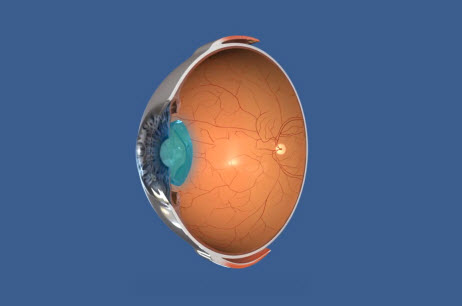What is Refractive Lens Exchange?
Refractive Lens Exchange (RLE) is an advanced eye surgery that revolutionizes vision correction by replacing the eye’s natural lens with an artificial intraocular lens (IOL). This highly effective and safe procedure addresses a range of refractive errors, including near-sightedness, farsightedness, and astigmatism. By opting for RLE, individuals can achieve permanent vision correction, significantly reducing their dependence on glasses or contact lenses.
RLE is a life-changing option for those seeking lasting visual improvement, enabling them to enjoy a clearer and more focused outlook on life. Whether it’s reading, working on a computer, or simply appreciating the beauty of the world, RLE opens up new possibilities for enhanced vision and improved quality of life.

What are the Benefits of RLE?
Refractive Lens Exchange (RLE) offers numerous advantages that make it a sought-after vision correction procedure. Here are some of the key benefits of RLE:
- Clear Vision at All Distances: RLE addresses presbyopia effectively, providing improved vision clarity both up close and at a distance. Say goodbye to reading glasses and enjoy sharp vision for all activities.
- Quick and Painless Procedure: The efficiency of RLE shines through its short surgical time, typically taking only 15 to 30 minutes per eye. Patients experience minimal discomfort during and after the procedure, allowing for a smooth recovery.
- Reduced Dependence on Glasses: Embrace a glasses-free lifestyle after RLE. Many patients find that they no longer require glasses or contact lenses for their daily tasks, enhancing their convenience and self-confidence.
- Long-Term Vision Improvement: RLE offers a permanent solution with implanted intraocular lenses that remain clear and durable over time. Unlike natural lenses, these artificial lenses do not develop cataracts, providing lifelong vision improvement.
- Versatile Vision Correction: RLE is not limited to specific refractive errors. It can effectively treat a wide range of vision problems, including near-sightedness, farsightedness, and astigmatism, making it a versatile option for diverse patient needs.

Different Types of Lens Options for Surgery
Sussex Eye Laser Clinic offers various lens options for Refractive Lens Exchange (RLE) to cater to individual vision needs. It includes:
- Trifocal Lens
Trifocal lenses take visual clarity to the next level by offering three focal points. They enhance vision for near, intermediate, and far distances, allowing patients to comfortably engage in various activities without constant adjustments.
- Enhanced Monofocal Lens
These are monofocal lenses which give excellent distance vison and add a very small amount of intermediate vision too. This enables the patients to have sharp distance vision and to read headlines of the newspaper without glasses. The patients still need reading glasses for sharp near vision.
- Extended Depth of Focus Lens (EDOF)
For those seeking an extended range of clear vision for distance and intermediate vision tasks, the EDOF lens is an excellent choice. These EDOF lenses provide exceptional range of vision of distance and intermediate vision, minimizing the need for glasses for intermediate distance. Patients can relish sharp vision, whether working on the computer or admiring the scenery from afar. Some patients with EDOF lenses may not need glasses not only for intermediate but for near too.
- Toric version of the above lenses
Designed to correct astigmatism alongside basic refractive errors with either trifocal, EDOF or enhanced monofocal lenses to provide patients with clear and crisp vision. These lenses are customized to address individual astigmatism levels, ensuring optimal visual acuity for daily activities with any of the above 3 lens types.
Each lens option for RLE caters to specific vision requirements, allowing eye surgeons to tailor the procedure to suit individual preferences and lifestyles. Consulting at Sussex Eye Laser Clinic will help determine the most suitable lens type for an enhanced and satisfying visual outcome.

Who is Suitable for RLE?
Refractive Lens Exchange (RLE) is an ideal option for individuals who meet the following criteria:
- Age and Presbyopia: RLE is particularly beneficial for individuals over the age of 45 who are experiencing presbyopia, a natural age-related decline in near vision. It addresses presbyopia effectively, allowing patients to regain clear vision for all distances.
- Stable Refractive Errors: Patients with stable refractive errors, such as near-sightedness (myopia), farsightedness (hyperopia), or astigmatism, can be suited for RLE. A stable vision ensures predictable and successful outcomes.
- No Significant Eye Diseases: A person for RLE should not have significant eye diseases or conditions that may compromise the success of the procedure. A thorough eye examination will help determine if RLE is a suitable option.
- Corneal Abnormalities: RLE is an intraocular procedure that involves lens replacement only. Therefore, individuals without corneal abnormalities are more likely to have greater chances of spectacle independence following RLE.
- Unsuitable for LASIK or Other Laser Eye Surgeries: Some individuals may not be suitable for LASIK or other laser eye surgeries due to specific eye conditions or factors. RLE can be an excellent alternative is some of these patients if they are eligible.

How is RLE Performed?
The journey begins with a comprehensive eye examination and consultation at Sussex Eye Laser Clinic. Mr. Nanavaty will assess the patient’s eye health, vision needs, and eligibility for RLE. During this stage, the procedure, potential risks, and expected outcomes are discussed.
On the day of the surgery, local anesthesia is administered in the form of eye drops to numb the eye’s surface, ensuring a pain-free procedure. Using advanced surgical techniques, the natural lens is removed through a small incision, and a premium artificial intraocular lens (IOL) is implanted. The IOL corrects refractive errors, providing improved vision.
Following the surgery, patients typically return home the same day. Most experience improved vision within a day or two, with full recovery taking up to 4-6 weeks. Follow-up appointments ensure proper healing and adjustment to the new IOL.
Sussex Eye Laser Clinic stands out as a highly reputable facility, offering top-notch eye treatments across various conditions. With years of experience, Mr. Nanavaty provides personalized and effective solutions, ensuring patients receive the best possible care.
Conclusion
Refractive Lens Exchange (RLE) is a transformative eye surgery offering numerous benefits, from clear vision at all distances to reduced dependence on glasses. By choosing Sussex Eye Laser Clinic, you can trust in the expertise of Mr. Nanavaty and his commitment to exceptional patient care. Explore the possibilities of RLE and enjoy a brighter, clearer future.
For more information or to schedule a consultation, visit Sussex Eye Laser Clinic.
